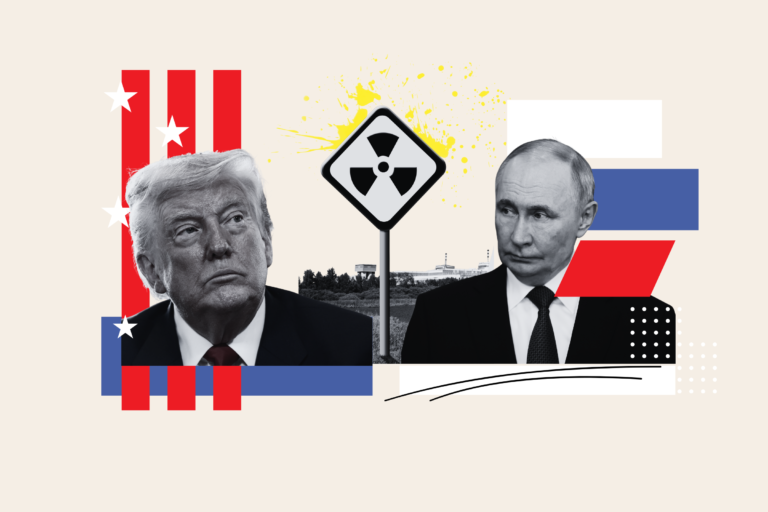President Donald Trump and his Russian counterpart Vladimir Putin, long considered potential partners in their mutual quest to improve bilateral ties, are now on course for a showdown over stalled Ukraine talks that has the potential to push both powers—and their leaders—to the brink.
And as the two sides openly tout their nuclear capabilities ahead of a looming Friday deadline for peace talks imposed by the White House on the Kremlin, the erosion of longstanding arms control measures and channels of communication add a new element of risk to an already volatile situation.
“The problem with the heated rhetoric is that rhetoric sometimes turns into action in unpredictable ways, and that’s what ought to concern us,” Thomas Countryman, board chairman of the Arms Control Association and former U.S. assistant secretary of state for international security and nonproliferation, told Newsweek.
He argued that that the recent threats exchanged between Trump and Putin’s ally, Deputy Security Council Chair Dmitry Medvedev, even the U.S. leader’s order to deploy nuclear submarines, had yet to cross the threshold of a new step toward crisis but did add further uncertainty with potentially dangerous consequences.
“The absence not just of arms control agreements, but the absence of existing channels of communication between Washington and Moscow means that there always remains a risk of an accident becoming an incident, becoming a conflict, becoming a nuclear conflict,” Countryman said.
Such a risk, while “low,” he said, has risen to perhaps its greatest level since one of the most infamous nuclear-fueled stand-offs between Washington and Moscow.
“I think that the general misconception that the American public has is that the risk of nuclear war is so low that it can be ignored,” Countryman said. “In fact, the Russians have the same capability to launch an attack on the United States as the U.S. has to launch an attack upon Russia.”
“And while those risks may be low,” he added, “they are probably higher than they have been at any time since the Cuban crisis of 1962.”
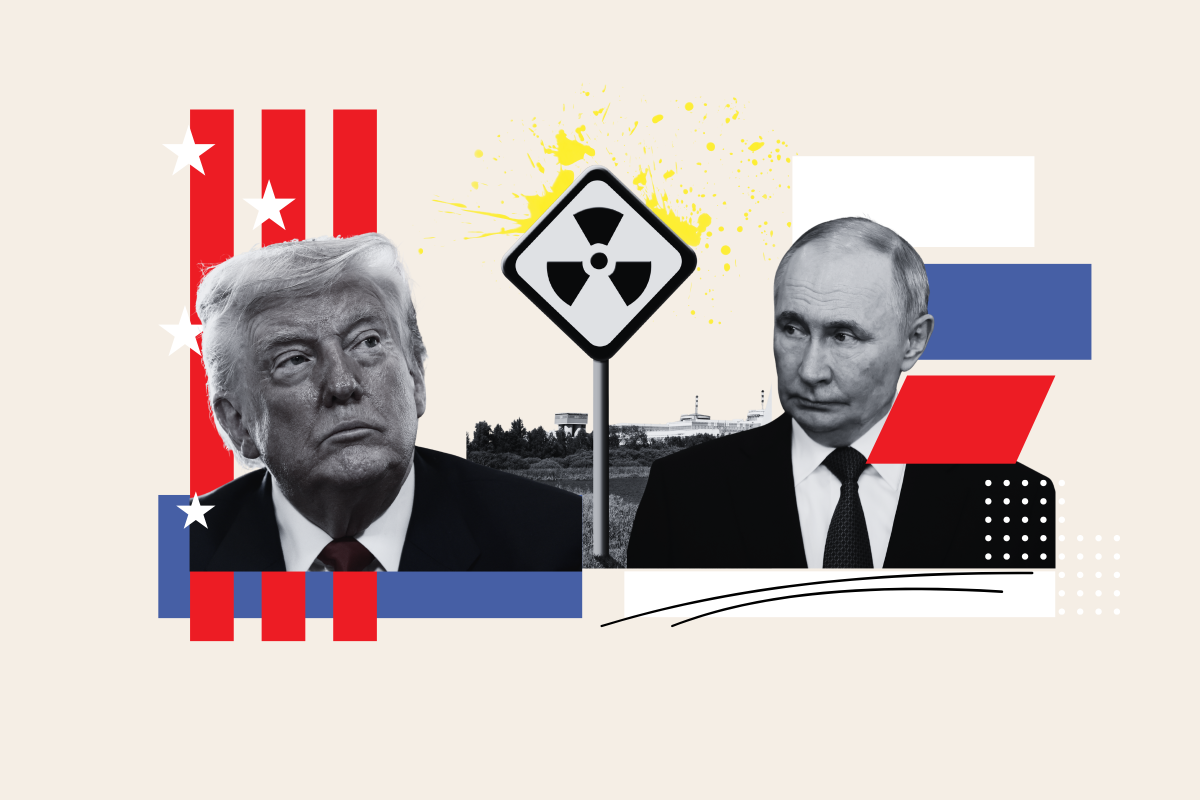
Photo-illustration by Newsweek/Getty
A Call to Arms
The 1962 Cuban Missile Crisis marked one of the first instances in which the U.S. and the Soviet Union ultimately agreed to walk back their forward-deployed capabilities under threat of total war. Moscow agreed to pull back missiles deployed to communist-led Cuba, while Washington quietly withdrew its own weapons deployed to NATO ally Turkey.
The next year came the Limited Test Ban Treaty, the first-ever agreement among nuclear powers to restrict nuclear testing, followed by the landmark 1968 Treaty on the Non-Proliferation of Nuclear Weapons (NPT) and further U.S.-USSR talks that produced the 1972 Anti-Ballistic Missile (ABM) Treaty, the 1987 Intermediate-Range Nuclear Forces (INF) Treaty and, just months before the collapse of the Soviet Union, the first Strategic Arms Reduction Treaty (START I) in 1991.
While the multilateral Limited Test Ban Treaty was later expanded into the Comprehensive Nuclear Test Ban Treaty and both Washington and Moscow remain parties to the NPT, bilateral arms control deals have almost entirely collapsed. The U.S. withdrew from the ABM in 2001 and the INF in 2019, while Russia announced its suspension of START I’s successor, New START, in February 2023.
Though the U.S. and Russia continue to respect the limits set out by New START, the deal is set to expire altogether in February 2026 unless new action is taken.
“Clearly the rollback of arms control agreements is extremely unhelpful,” Mallory Stewart, executive vice president of The Council on Strategic Risks and former U.S. assistant secretary for the Bureau of Arms Control, Deterrence, and Stability, told Newsweek.
“Arms Control is intended in large part to prevent misunderstanding, miscalculation, and unintentional escalation—the exact risks that are exacerbated during heightened tensions,” Stewart said. “New START—when it was being implemented—helped prevent the destabilization of the U.S.-Russia relationship in many ways.”
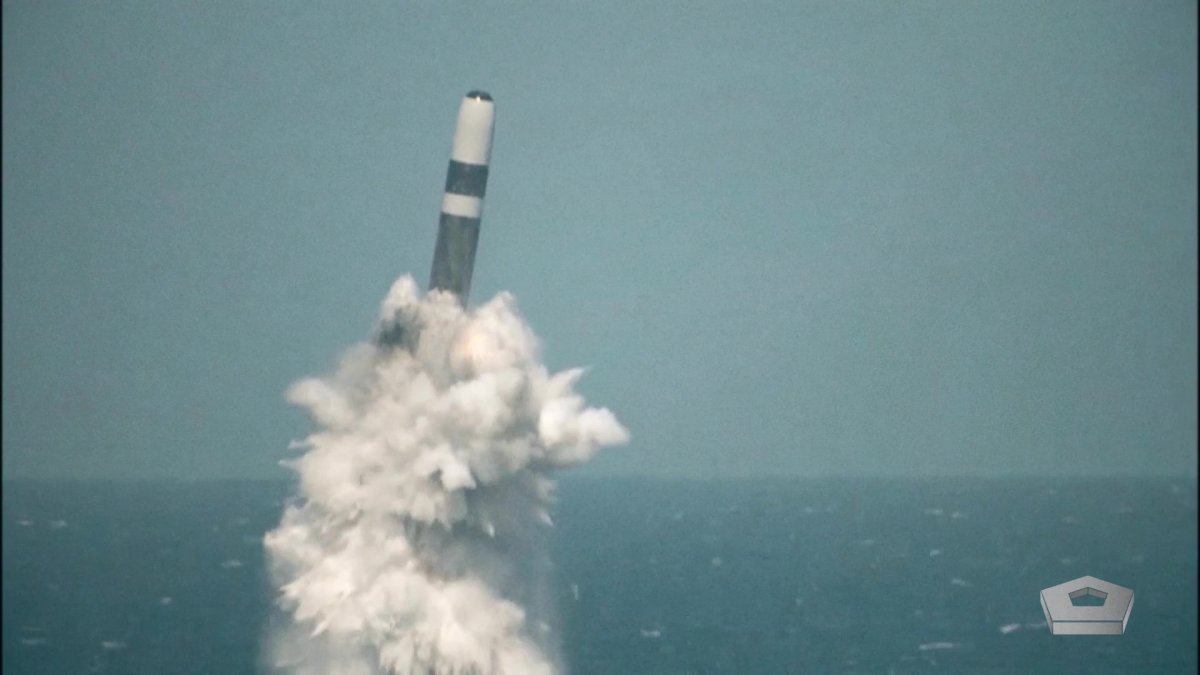
Trump’s Arsenal
While Trump’s order on August 1 to send “two nuclear submarines” to “the appropriate regions” did not necessarily constitute an added threat to the Kremlin—U.S. submarines have the capability to strike Russia from afar—the president does have other measures he could take that Stewart argued could raise the stakes for Putin.
“If Trump really wanted to threaten Russia, he could impose new sanctions; he could put direct tariffs on Russia (right now there are only secondary tariffs); or he could designate Russia a state sponsor of terrorism,” Stewart said. “Trump could throw his full support behind Ukraine; he could reinforce extended deterrence alliances against Russia; and he could support Ukraine’s membership in NATO.”
“I’m not saying he should do all of this,” she added, “but he hasn’t done any of it.”
Former NATO Deputy Secretary-General Rose Gottemoeller told Newsweek that “the current war of nuclear words between Moscow and Washington” amounted to “street theater.”
Gottemoeller, who is also a former U.S. undersecretary of state for arms control and international security, also pointed out how the military situation has developed over the past decades in a way that European allies were becoming more immune to Moscow’s front-line threats to the continent.
“In the 1980s, we were concerned about Soviet deployments of intermediate-range missiles, the SS-20, because they posed a fundamentally new threat to our European allies: short warning attack on their capitals,” Gottemoeller, now a lecturer at Stanford University’s Institute for International Studies and research fellow at the Hoover Institute, said.
“Nowadays, there are so many missile threats to European capitals from the Russian side—including naval missiles and the missiles that Putin has already deployed in Belarus—that we are somewhat inured to them,” Gottemoeller said.
And while she noted that NATO nations remained vulnerable to Russian threats, she argued that the war in Ukraine had also begun to raise awareness of the need for more robust security among members of the U.S.-led alliance in Europe.
“Of course,” Gottemoeller said, “the NATO allies are still weak on integrated air and missile defense, but the war in Ukraine is bringing home to European capitals that they need to be able to defend themselves against all kinds of missiles—including cruise missiles and attack drones that are being exchanged on a daily basis between Russia and Ukraine.”
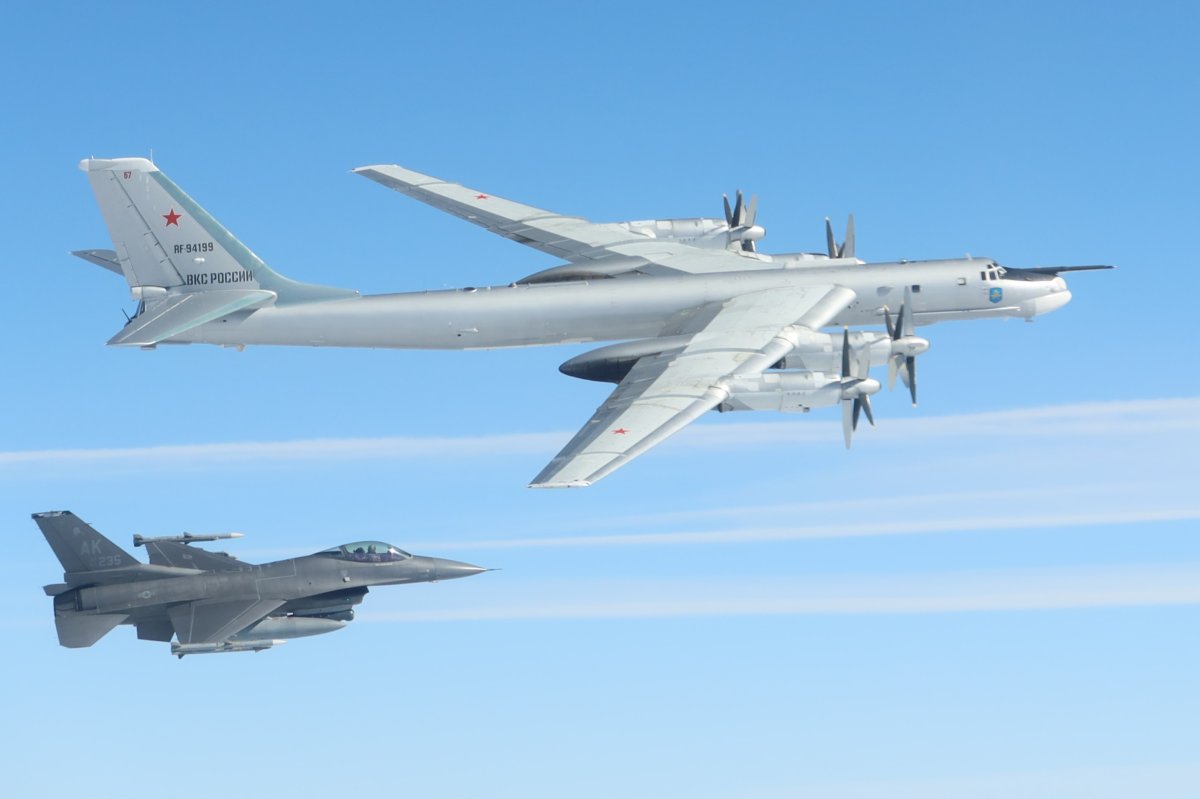
North American Aerospace Defense Command/11th Air Force/U.S. Department of Defense
Putin’s Options
Putin has long framed his foreign policy against deteriorating arms control and NATO expansion in Eastern Europe. Both trends have been a mainstay of his messaging since coming to power a quarter of a century ago and have featured heavily in his justification for waging war in Ukraine.
As such, Dmitry Stefanovich, research fellow at the Russian Academy of Sciences’ Center for International Security, argues that if the U.S. were to embark on concerted military moves in Europe, even “symbolic,” then “Russia has plenty of options to react in kind.”
Such measures include, according to Stefanovich, increasing patrols of Russia’s nuclear triad assets, namely missile submarines, road-mobile intercontinental ballistic missiles (ICBMs) and heavy bombers. The aerial component, he argued, could also be carried out near U.S. borders and potentially in joint patrols with China.
“If the situation will continue to degrade, Russian Strategic Rocket Forces might even carry out ICBM test launches from the deployment areas,” Stefanovich told Newsweek, whereas “normally those take place from the designated test ranges, Plesetsk and Kapustin Yar.”
Based on the Russian Foreign Ministry’s statement Monday that it would no longer abide by a self-imposed moratorium on deploying platforms once banned by the INF, Stefanovich also predicted that “we will definitely see activation of new missile units with INF-range weapons of different types.”
“However, the scope and tempo of such deployments can be very different depending on the overall strategic environment,” Stefanovich said. “And if there will be more and more U.S. INF-range weapons appearing near Russian borders, Russia will respond with a measure announced long ago: move sea-based hypersonic weapon platforms closer to the U.S. coasts.”
But when it comes to U.S. leverage against Russia over the war in Ukraine, he argued that “the most important U.S. and NATO contribution” to Kyiv’s war effort has been the provision of intelligence, surveillance and reconnaissance (ISR) and targeting data, platforms which are already active.
He argued “there is also not much that the U.S. can provide” to Kyiv in terms of weaponry, as “the stockpiles are almost depleted, and the biggest challenge lies in the extreme lack of manpower on the Ukrainian side.”
Still, with threats now being exchanged at higher levels and greater tempos, he warned that the U.S. and Russia risked normalizing such nuclear-fueled rhetoric, laying the groundwork for the kind of crisis that both sides are in reality seeking to avoid.
“There is a very real threat of an even bigger crisis, and…no one wants this crisis,” Stefanovich said, “but the logic of action and reaction cycles without normal diplomatic and military-to-military communications, not to mention near-absence of arms control mechanisms, can make it kind of a default scenario.”
Alexander Chekov, lecturer at Moscow State Institute of International Relations’ Department of International Relations and Foreign Policy of Russia, pointed out how “both the U.S. and Russia retain a shared interest in nuclear risk reduction, as demonstrated by their continued exchange of information on sea- and land-based missile launches in accordance with the 1988 Ballistic Missile Launch Notification Agreement” and continued adherence to New START’s stockpile limits.
Yet he argued such norms had already given way to a new build-up that threatened to further degrade mutual reassurances and visibility for both sides.
“These surviving norms reflect a mutual desire to maintain some restraint in the ongoing arms race,” Chekov told Newsweek. “However, should the arms control regime continue to crumble further, the result would be decreased predictability in strategic relations and elevated risks between the two powers.”
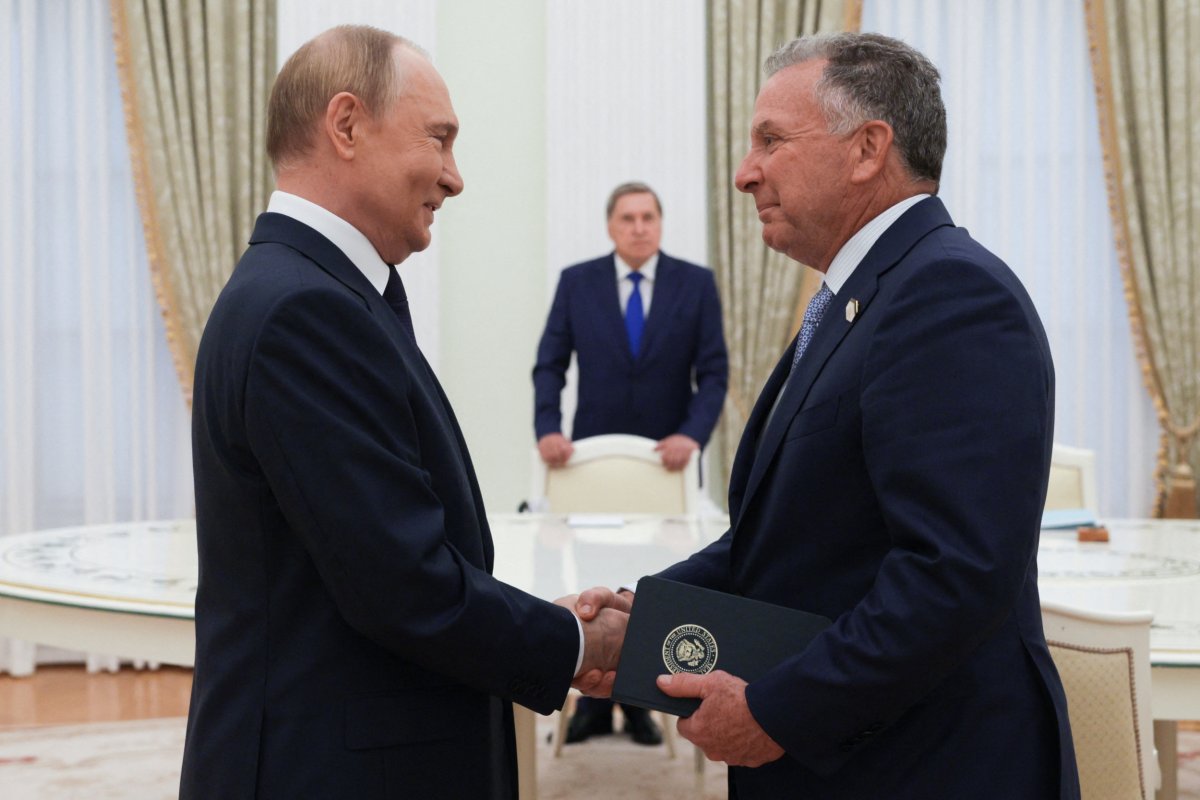
Gavriil Grigorov/Pool/AFP/Getty Images
MAD By Design
Since the debut Soviet nuclear test occurred in 1949, just four years after the U.S. dropped the first atomic bomb during World War II, the unofficial rule of nuclear warfare has been “mutually assured destruction,” or MAD.
The Cuban Missile Crisis is just one example of Washington and Moscow resorting to nuclear threats to avoid a kinetic confrontation. When the Soviet Union considered intervention a decade later in the 1973 Arab-Israeli Yom Kippur War, the U.S. placed its nuclear forces on worldwide alert, sparking another crisis that ultimately resolved with a ceasefire.
Matthew Kroenig, vice president and senior director of the Atlantic Council’s Snowcroft Center for Strategy and Security, thus argues that the U.S. should “relearn some of those lessons of nuclear brinkmanship from the Cold War, and thank goodness Trump seems to understand them instinctively.”
Kroenig, who is also a former U.S. defense and intelligence official now serving on the Congressional Commission on the Strategic Posture of the United States, pointed out that such moves were not being taken in a vacuum, but rather as part of a dual strategy consisting of both military threats and diplomatic engagement, underlined by the visit to Russia on Wednesday by Trump’s special envoy, Steve Witkoff, to meet with Putin.
“I think in general, a pressure and engagement strategy works pretty well,” Kroenig told Newsweek. “And this is what the United States has done over the years with other countries.”
“And essentially the message is, so long as you continue on this path, it’s contrary to our interest, in this case, engaging in a war in Ukraine, we’re going to make life difficult for you with nuclear threats, more assistance to Ukraine, sanctions, etc.,” Kroenig said. “But if you’re willing to come to the table and negotiate, then we’re here and we’re willing, and we’re waiting.”
Kroenig acknowledged that such tactics carry with them inherent risks of inadvertent escalation, perhaps especially at a time when he felt that the U.S. and Russia were facing “the end of negotiated arms control limits for the first time since the 1970s, which will mean a loss of transparency.”
At the same time, he argued, that was precisely the point.
“If these moves were completely safe, they wouldn’t put any pressure on Putin at all,” Kroenig said. “But the fact that they are dangerous is what’s supposed to make Putin think twice. So, I don’t see imminent nuclear war, but I think it’s raising the risk.”
“Early nuclear strategists referred to nuclear brinkmanship essentially as a game of chicken,” he added. “The entire purpose is to raise the risk, to force the adversary to back down.”


